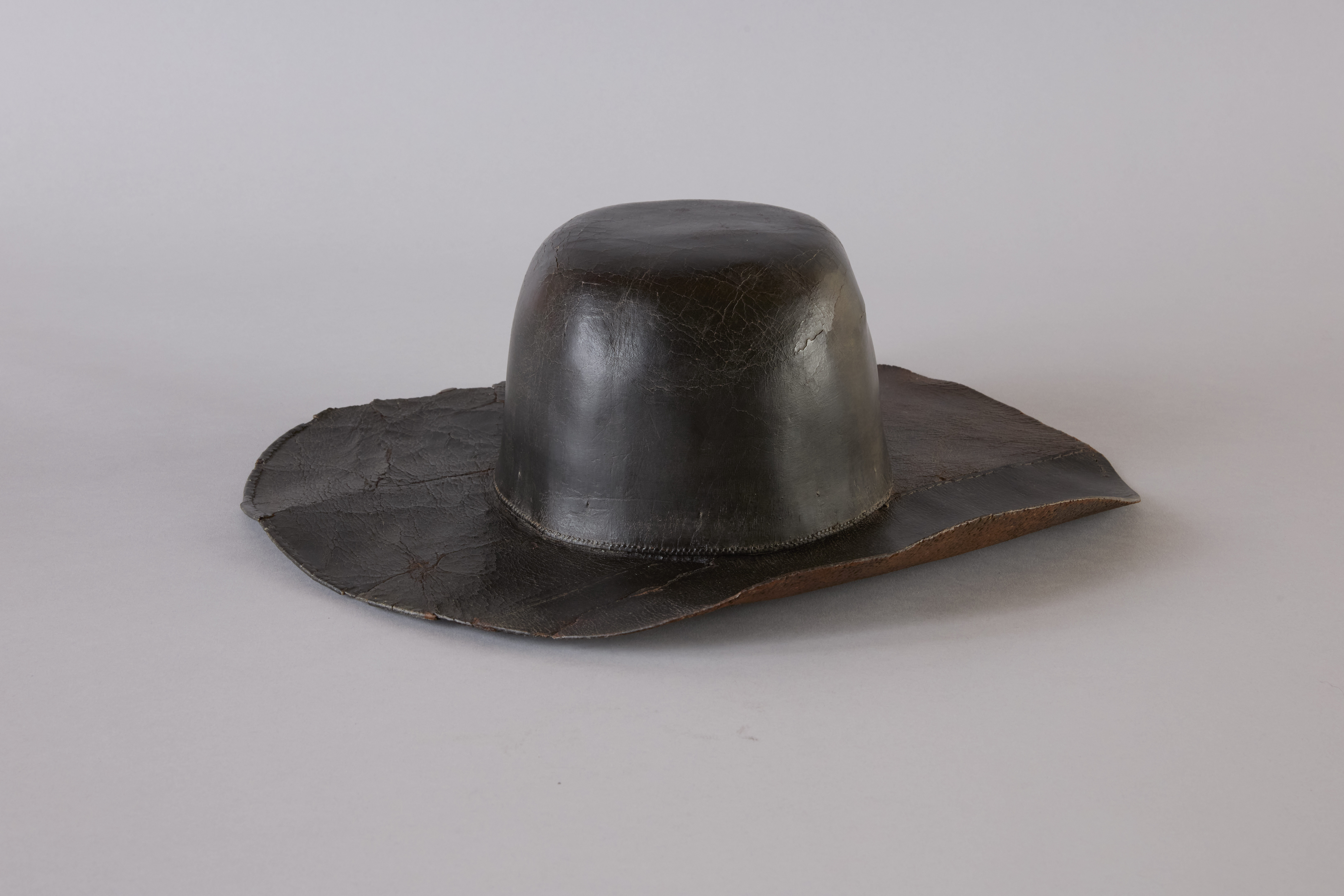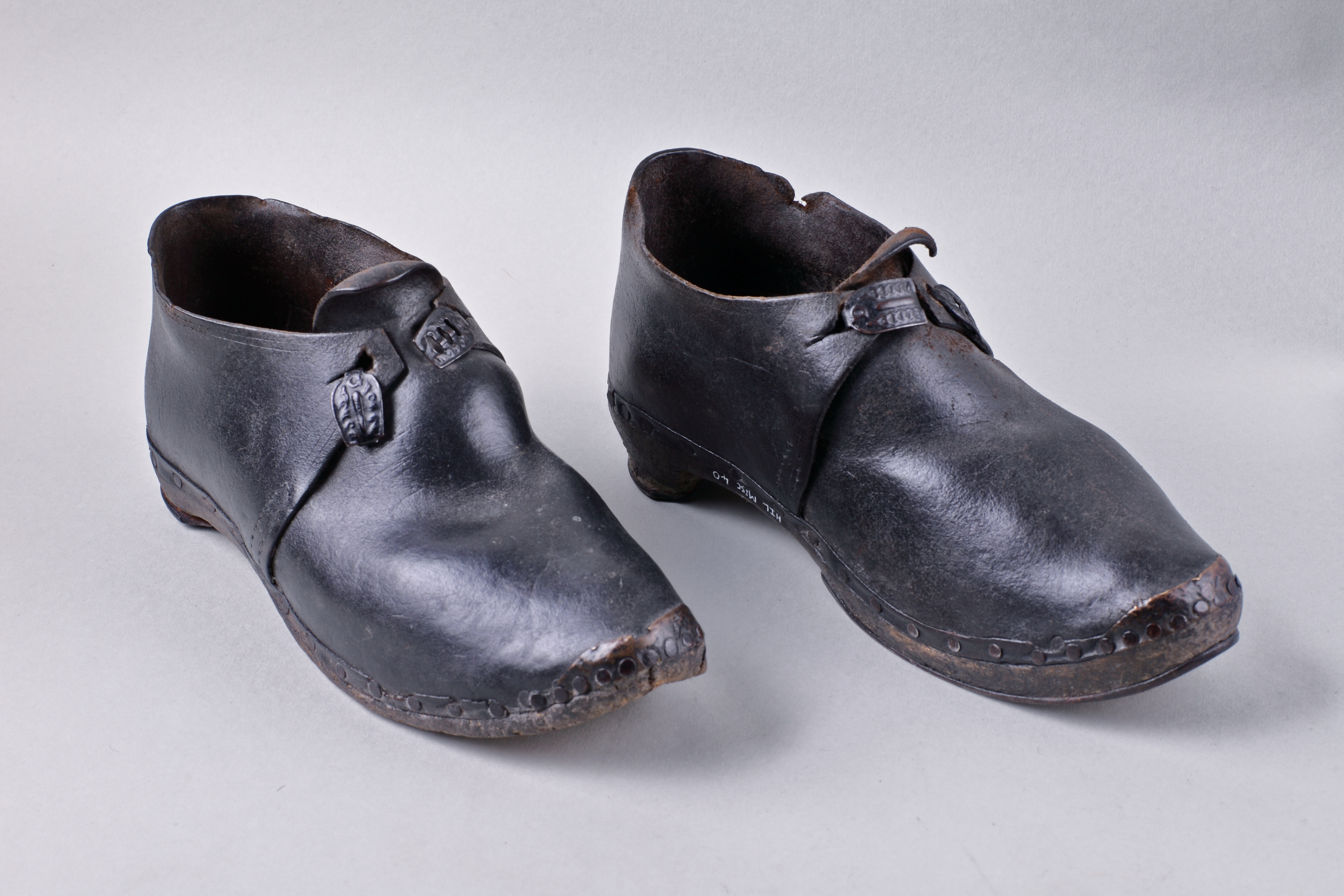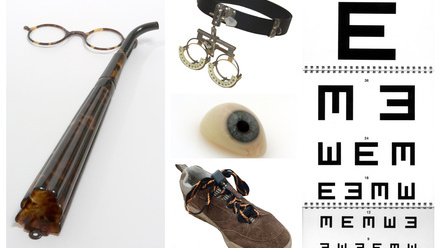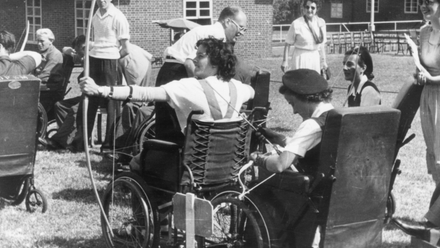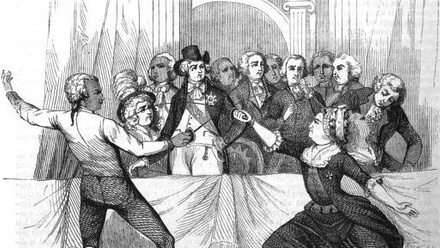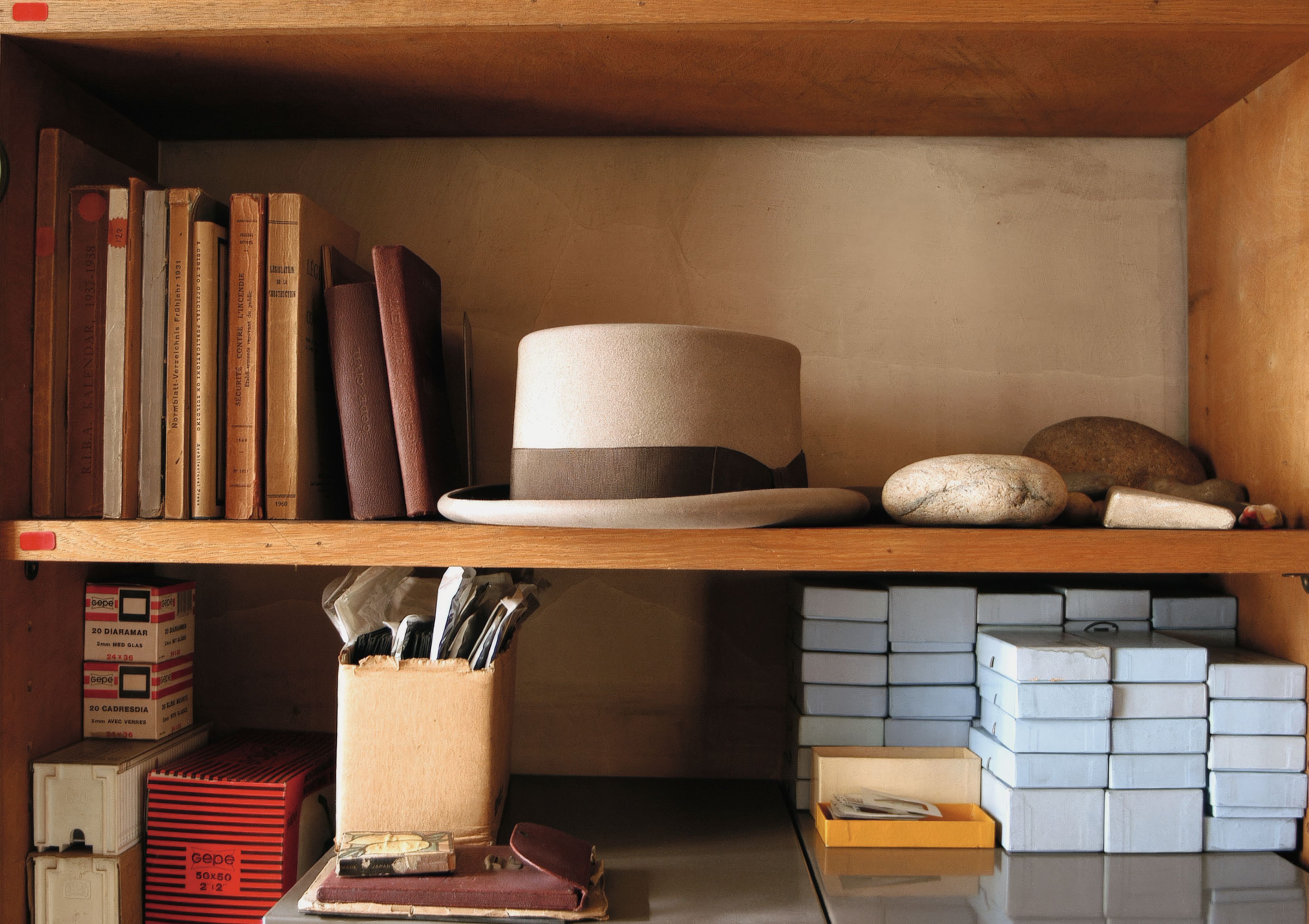
If the hat fits... worn by one architect, kept as an inspirational reminder by another. Auguste Perret’s hat / Catalogue ref: NT 112836. (©National Trust/David Watson)
What story cannot be told through the things that people have worn through time? Bringing us as close to the body as possible, the vast and brilliant collection of fashion and dress at the National Trust gives us intimate access to the life and style of some of the most influential and interesting people to have lived, worked and dressed themselves at our places. From footmen in their finest livery to a famous farmer’s clogs; knickers, nightshirts, and ballgowns of the rich and powerful, the collection is a veritable treasure trove, a dressing-up box of stories, tales, fabrications and fancies.
In our upcoming publication 100 Things to Wear: Fashion from the Collections of the National Trust, we’ve thrown open the wardrobes of the National Trust to uncover the significant part that fashion and dress have played, from the religious embroideries of the 15th century right up to the sharply cut suits of the 1990s.
The diversity of the collection means we can even tell the story of some of the greatest builders, makers, movers and shakers from across the National Trust, who are responsible for some of the greatest feats of architecture in England, Wales and Northern Ireland.
We’ve shared some of their stories – and their fantastic clothes – here.
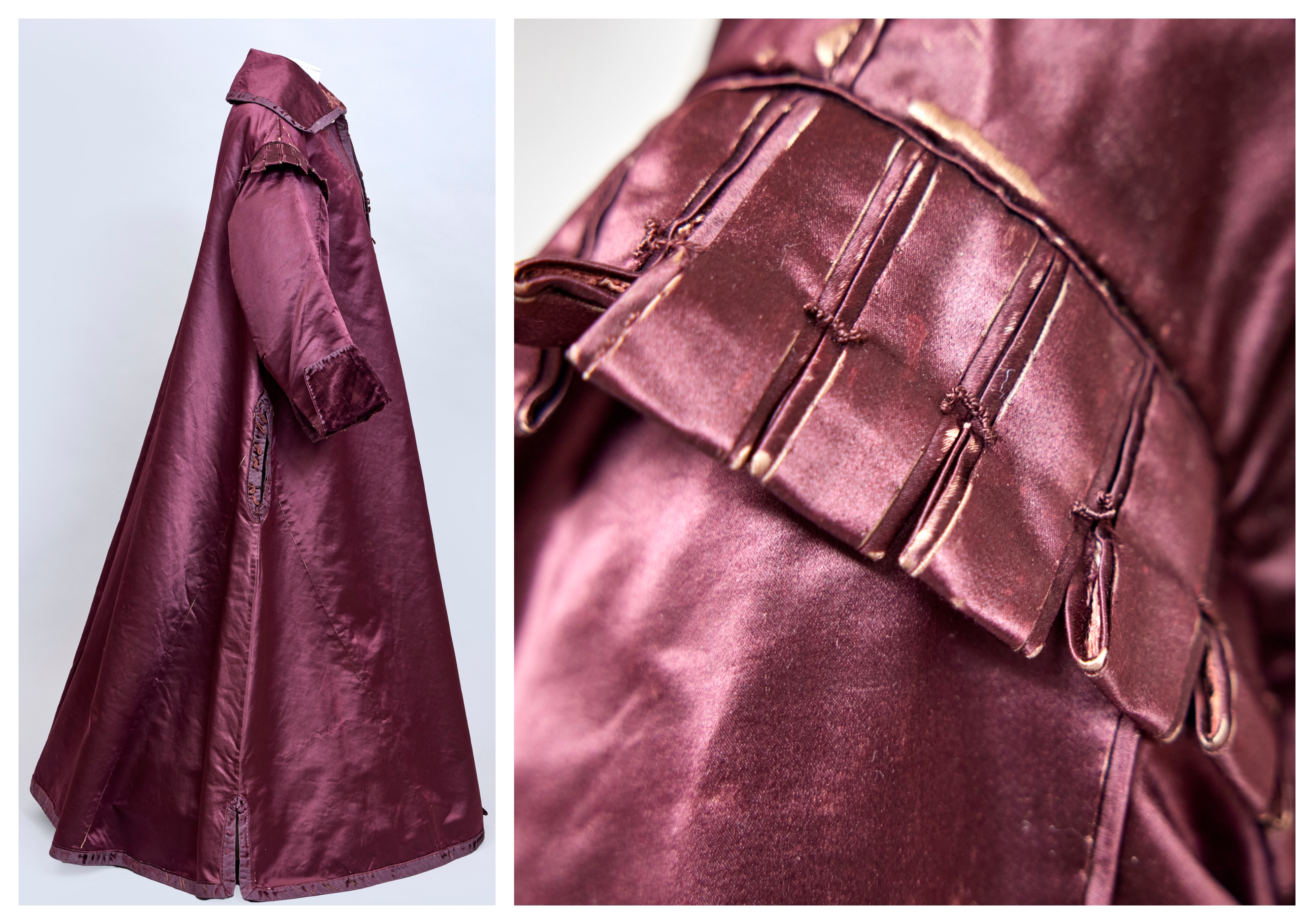
Bess of Hardwick’s robes / Catalogue ref: NT 1129653. (©National Trust Images/Pete Huggins)
Bess the builder
Built within the landscape of her childhood home, Hardwick Hall in Derbyshire stands as a testament to Elizabeth Talbot, Countess of Shrewsbury’s (1527–1608) tenacious and determined path through life. Her high-status marriages, financial capabilities and entrepreneurial land management created a vast fortune that she invested in ambitious building projects at Chatsworth and Hardwick. The opulence of her purple satin robe combines magnificence with comfort, as the velvet lining would have kept her warm and comfortable in her magnificent but lofty new apartments, which gave rise to the satirical rhyme ‘Hardwick Hall, more glass than wall’.
Edward the carpenter
Charles the collector
Most of us dream about an entire room dedicated to our most beloved and fashionable pieces of clothes, but if you’re an eccentric architect with a taste for whimsical, wonderful and weird historic dress, you don’t have to dream – you simply build one. Charles Paget Wade (1883–1956) purchased Snowshill Manor, a picturesque Cotswolds estate, in 1919, and spent years restoring it to house his enormous collection of national and international curiosities. Fashion was a huge part of this collection. From delicate 18th century bonnets to precious East Asian robes, Paget Wade’s collection maps the evolving trade and craft of the global textile industry.
His wealth of dress and accessories did not simply stay on display. Paget Wade and his companions were known to wear the 18th century gowns, bonnets, and even postillion boots around the grounds of Snowshill, capturing the merriment on the steps of the manor house in photographs like the one below.
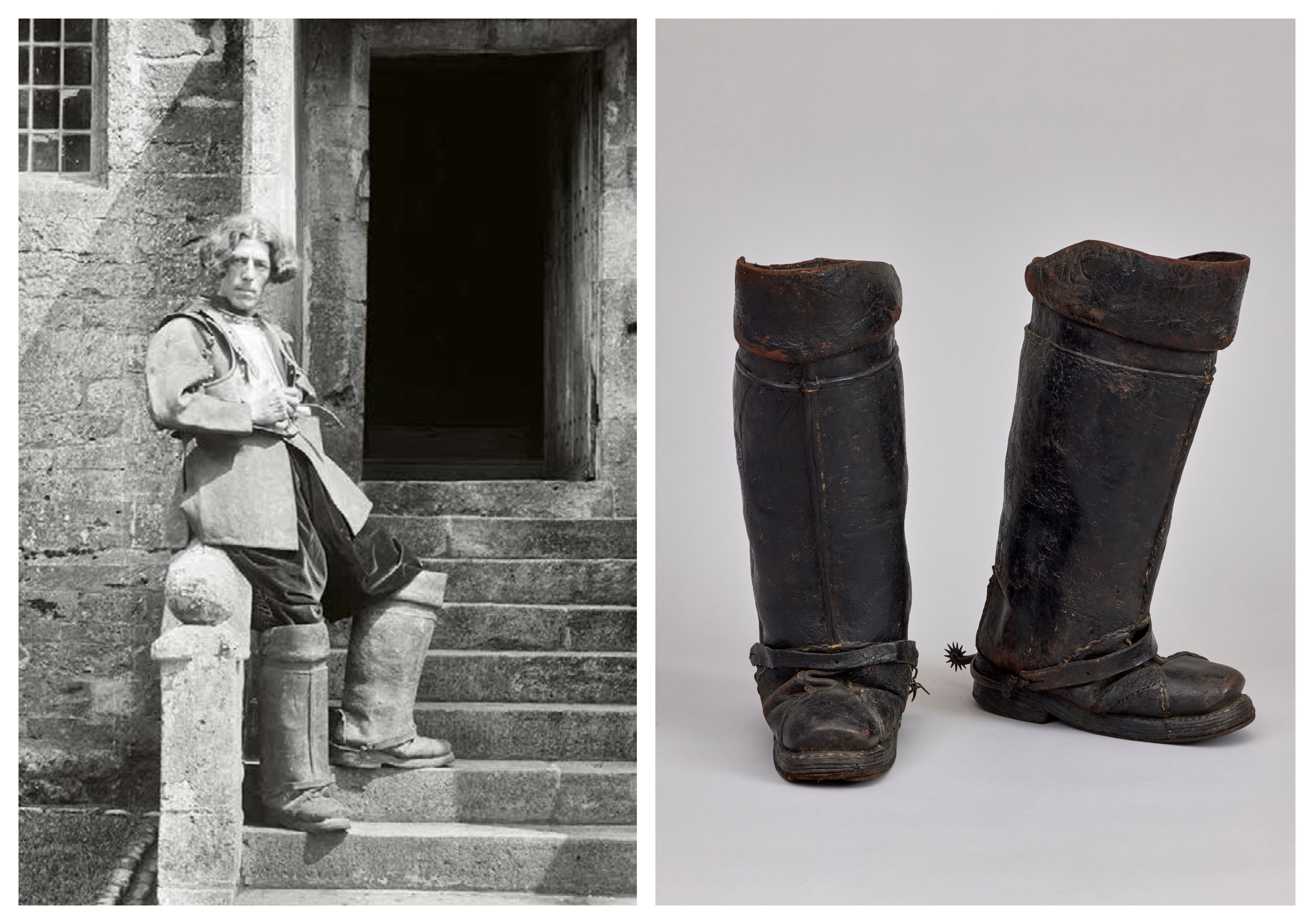
Charles Paget Wade wearing a pair of postillion boots from his fashion collection / Catalogue ref: NT 1350732) (©National Trust Images/Pete Huggins)
Auguste the architect
Beatrix the farmer
Fashion houses
There are so many synergies between the worlds of dress and architecture – not simply how these great builders and craftspeople fashioned their identities from the practical to the flamboyant, but also through the construction of a garment to house the body: in the patterns and compositions employed by dressmakers, couturiers and tailors across centuries. Both client and architect alike use their building projects to showcase creative individuality and leave within their fabric the hand and eye of their makers. Expression through fabric, cut, accessory and style of dress is a centuries-old way of showing oneself to the world, and, for many of us, a way to feel at home, warm and comfortable.
100 Things to Wear: Fashion from the Collections of the National Trust is an ode to how people have constructed themselves through their clothes over time – to work, to build, to create, to construct, and to enjoy themselves.
Find out more
- 100 Things to Wear: Fashion from the Collections of the National Trust will be published on 4th September 2025.
- National Trust Collections – Explore more treasures
Read our earlier posts for more highlights from the Trust's collections:

